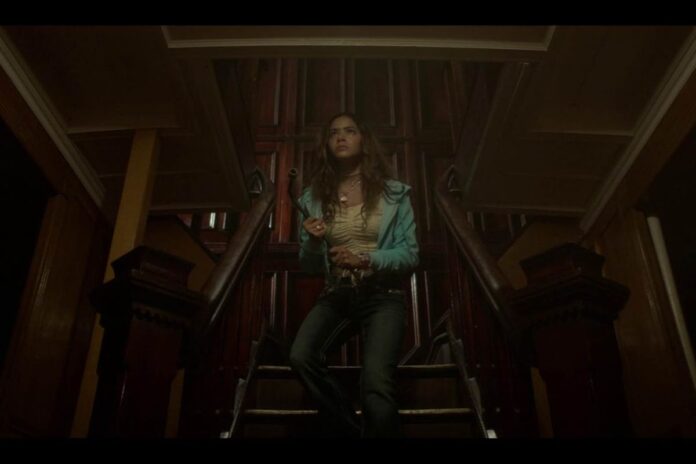Released on Oct. 30 on Netflix, Time Cut follows teenager Lucy (Madison Bailey) as she is unexpectedly transported back to 2003, arriving just days before her sister Summer (Antonia Gentry) is murdered by a serial killer.
The Hannah McPherson-directed film presents an intriguing premise reminiscent of the 2023 slasher “Totally Killer,” where Kiernan Shipka’s character travels back to the 1980s to prevent a serial killer from killing her mother’s friends. While Totally Killer masterfully combines horror, humour and charm, Time Cut struggles to achieve the same balance.
The film opens on April 18, 2003, diving straight into an early-2000s soundtrack with “What’s Luv?” by Fat Joe and Ashanti blaring at a high school party. In this opening sequence, Summer falls victim to the “Sweetly Slasher,” a title based on the town’s name, making her the latest victim in a series of murders targeting her friends.
The story then jumps to 2024, where we meet the lonely Lucy, who is still coping with the lasting impact of Summer’s death. Though she was born two years after her sister’s murder, the loss haunts her. Summer’s room hasn’t been touched since her death, and Lucy’s parents are painstakingly protective and emotionally absent. Her entire life revolves around someone she never knew.
On the anniversary of Summer’s death each year, the shattered family honours her with flowers and other items at the site of the killing. This year, however, Lucy encounters a puzzling machine at the site that sends her back in time to 2003, two days before her sister’s murder, giving her a chance to rewrite history.
Time Cut’s main issue lies with the script. The majority of the characters lack depth, making them hard to root for and connect with throughout the film’s breezy 90-minute run time.
Most of the performances also miss the mark, with lines delivered in uncertain tones and comedic moments failing to land as intended. It feels as if most of the actors are simply painfully fulfilling their obligation of being there.
To boot, the movie’s cast is noticeably small — a side effect of the film being shot in 2021 in the midst of the COVID-19 pandemic. The shrunk-down cast gives off a half-baked feel that is hard to shake.
Madison Bailey, the lead of the film, isn’t the star of the show – it’s Gentry as the sister who falls victim to the Slasher.
Gentry captures her character’s emotions well and plays the sentimental moments with the sister she never met rather beautifully. The 27-year-old actress has a great understanding of her character, which allows the viewer to connect with her.
Even with Gentry’s performance, you’ll be distracted by subpar costume design. The scenes set in 2003 feel off, as the characters’ outfits are nearly indistinguishable from those in 2024, aside from a few wearing Uggs and sideways hats. It feels more like a parody of early 2000s fashion than an authentic representation.
And what does the killer wear, you ask? A plain and unoriginal rubber mask, perfectly mirroring the film itself: a squandered opportunity.
Another mind-boggling aspect is the film’s time setting. It’s clearly aimed at teenagers as a gateway horror movie, similar to Happy Death Day, so why set it in 2003? Teenagers from the early 2000s are now fully-fledged adults and certainly won’t be watching this film. To properly connect with the target audience, why not set it in, say, 2019?
It’s pretty clear that Netflix tried to capitalize on the popularity of its original TV series Outer Banks and Ginny & Georgia by casting lead actresses from each. It simply didn’t pan out.
Though the film has nice sentimental moments and a solid premise, it fails to deliver on tension, comedy, creativity and storytelling as a whole.
Featured image from IMDb.






